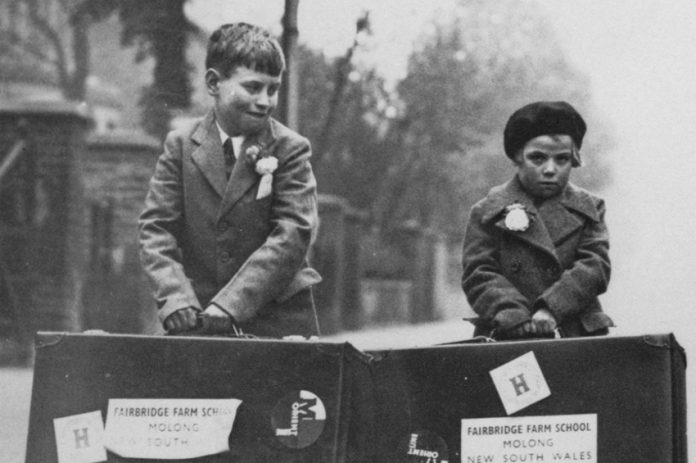
THE ‘Independent Inquiry into Child Sexual Abuse on report into the Child Migration Programmes’ criticises UK governments over their cruel policy that was continued beyond the 1950s. The report published on Thursday recommends that all child migrants are financially compensated by the UK government through a redress scheme.
The report also recommends that organisations involved in implementing the migration programmes offer apologies to child migrants, where they have failed to do so. The report executive summary says: ‘Over a period of many years before and after the Second World War, successive United Kingdom governments allowed children to be removed from their families, care homes and foster care in England and Wales to be sent to institutions or families abroad, without their parents.
‘These child migrants were sent mainly to Canada, Australia, New Zealand and Southern Rhodesia (now Zimbabwe). Government departments, public authorities and charities participated in these child migration programmes and were responsible, to varying degrees, for what subsequently happened to the children. ‘Post-war, around 4,000 children were migrated, mostly to Australia.’
It adds: ‘Although the focus of the Inquiry is on sexual abuse, the accounts of other forms of abuse provide an essential context for understanding the experiences of child migrants. ‘Many witnesses described “care” regimes which included physical abuse, emotional abuse and neglect, as well as sexual abuse, in the various settings to which they were sent.
‘Some described constant hunger, medical neglect and poor education, the latter of which had, in several instances, lifelong consequences. By any standards of child care, then or at the present time, all of this was wrong.
‘A former child migrant said his experiences at one school were “better described as torture than abuse”, saying he was locked in a place known as “the dungeon” without food or water for days.
‘Another told of “backbreaking” work on the building of a new school building. ‘Yet another spoke of the failure to give him medical attention, which resulted in the loss of an eye. In some places, there were persistent beatings of boys and girls, and one witness described how he had tried to kill himself at the age of 12.
‘In a particularly awful incident, we heard of the sadistic killing of a pet horse loved by the children, which a group of 15 children were forced to watch as a form of collective punishment for an alleged wrongdoing. ‘This incident took place during what was known as a “Special Punishment Day” at Clontarf (one of the institutions to which child migrants were sent). This epitomised the brutal and brutalising environment in which many child migrants lived.
‘We heard that there were few, if any, means of reporting abuse and children lived in fear of reprisals if they did so. They were disbelieved and intimidated, often with violence. ‘One witness was told to “pray” for her abuser, with no further action being taken on the abuse. Another was told not to tell anyone when he reported that he had been raped.
‘For some children, one of the most devastating aspects of their experience was being lied to about their family background, and even about whether their parents were alive or dead.
‘This had a lifelong impact, including on their physical and mental well-being and their ability to form relationships. ‘This problem was made worse by some institutions which failed to keep records properly, or lost records, effectively robbing these children of their identity. The effects of this carelessness and poor practice cannot be overestimated.
‘The agencies involved in “sending” children in the migration programmes were mostly voluntary organisations, with a small number being migrated by local authorities. ‘Some organisations, such as the Fairbridge Society and Barnardo’s, operated as both sending and receiving institutions, providing schools and homes in the country of migration.
‘Others migrated children to institutions run by other organisations. From evidence available to the Inquiry, there was a sense in which these children were treated by some of the sending institutions as “commodities” with one institution even referring to its “requisition” for a specific number of children to be sent to Australia.
‘Many of the voluntary organisations involved failed in their duty to exercise proper monitoring or aftercare, having dispatched children, in some cases as young as five, to the other side of the world.’ The summary stresses: ‘Nevertheless, it is the overwhelming conclusion of the Inquiry that the institution primarily to blame for the continued existence of the child migration programmes after the Second World War was Her Majesty’s Government (HMG).
‘This was a deeply flawed policy, as HMG now accepts. It was badly executed by many voluntary organisations and local authorities, but was allowed by successive British governments to remain in place, despite a catalogue of evidence which showed that children were suffering ill treatment and abuse, including sexual abuse. ‘The policy in itself was indefensible and HMG could have decided to bring it to an end, or mitigated some of its effects in practice by taking action at certain key points, but it did not do so.
‘For example, the Inquiry struggled to understand why HMG imposed a formal legal process for consent to migrate children in the care of a local authority (via the Home Office) yet did not apply the same rules to the migration of children being sent abroad by voluntary organisations.’
The summary adds: ‘We concluded that the main reason for HMG’s failure to act was the politics of the day, which were consistently prioritised over the welfare of children.’